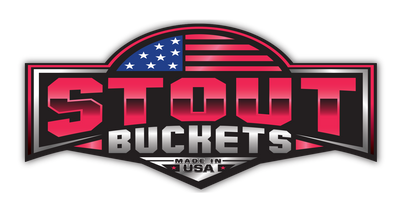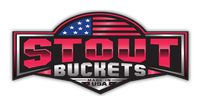How To Inspect Your Skid Steer Attachments for Wear

Skid steer attachments offer high performance in challenging conditions, whether you’re moving loads with a bucket, tearing through tough ground with a trencher, or leveling a site with a grader.
But those conditions can take a toll over time, leading to wear and tear that, if not caught early, may reduce efficiency or even cause serious damage. Learning how to inspect your skid steer attachments for wear is essential for maintaining productivity and extending the lifespan of your equipment. Below, we’ll walk through everything you need to check, step-by-step, to ensure your attachments are in great shape and ready for action.
Clean Attachment First
Dirt, grease, and debris tend to accumulate in the crevices of skid steer attachments, leading to wear or damage. Use a pressure washer to rid the attachment of build-up, and make sure to get into all the nooks and crannies. For areas that require extra attention, use a bristle brush to scrub away grime.
Cleaning not only prevents future damage but also gives you a clearer view for your inspection. Plus, it helps you identify smaller issues that might otherwise go unnoticed under layers of mud or oil.
Listen for Unusual Sounds
Attach the tool to your skid steer and engage it fully. Pay close attention as it operates and focus on the sounds it produces. Grinding, squealing, or clunking noises often signal trouble. These noises could indicate friction in the mechanics, misaligned parts, or other problems that could worsen with continued use.
Verify Smooth Movement
Your attachments should operate fluidly. Look for signs of resistance, jerky movement, or stiffness. If movement seems anything but smooth, a lack of lubrication may be the culprit.
Apply lubricant specifically designed for your equipment to relevant joints, pivots, and other moving areas. If lubrication doesn’t resolve the issue, inspect further for warped components or damage to internal mechanisms.
Confirm Good Performance
Put the attachment to work in a test task. Does it perform as efficiently as it did when it was new? Poor performance can manifest in sluggish responses, uneven output, or reduced capacity.
For example, a bucket may fail to retain its full load, or an auger may not dig with its normal precision. Testing each attachment’s performance ensures that it’s delivering what you expect and alerts you to any early issues.
Check Hydraulic Hoses
Look for cracks, leaks, or bulges. A worn-out hose can lead to hydraulic fluid loss, disrupting functionality and potentially damaging other components.
Run your hand gently along the length of the hose to feel for inconsistencies, but ensure the machine is powered down for safety. Additionally, review the connection points for any leaks or looseness.
Inspect Fasteners

Loose or missing fasteners often lead to misalignment and inefficiency. Check each bolt, screw, and other hardware to confirm they’re tight and secure. Pay special attention to fasteners in high-vibration areas, as they are more likely to loosen over time. Inspect for rust or corrosion, as these can compromise the fastener's strength and lead to further issues.
If a fastener shows any sign of wear or stripping, you should replace it immediately. Ignoring this step could result in structural failure during operation, leading to more costly repairs down the road.
Use the appropriate tools when tightening fasteners to avoid over-tightening, which can cause damage. Apply thread-locking compounds to fasteners in critical areas to prevent them from loosening. Regularly schedule inspections, especially after heavy use or exposure to harsh conditions, to catch potential issues early.
Look at Pins and Brushings
Check for flattened areas, unusual gaps, or excessive play between components. These signs often point to wear or damage that could impact your equipment's performance. Replacing worn or damaged pins and bushings promptly is key to keeping your attachments running smoothly and efficiently.
Inspect the pins for cracks or signs of rust as these can weaken the structure over time. Make sure bushings fit snugly around the pins to prevent unnecessary movement that can cause further wear.
Ensure Secure Safety Shields
Another aspect of how to inspect your skid steer attachments for wear has to do with protecting operators with the safety built into the machine. Confirm each shield remains securely in place and free of cracks or dents. Inspect the mounting hardware to ensure the shields are firmly attached and not at risk of coming loose during operation. Check for any signs of rust or corrosion that could weaken the shield's integrity over time.
Damaged or loose safety shields can compromise your worksite’s safety and cause unnecessary risks. If you find damage, replace the shield before putting the attachment back into operation.
Check Chain Tension
Certain attachments, such as trenchers and brush cutters, rely on chains to function. Check these chains for proper tension. They shouldn’t be too tight or too loose.
Consult your equipment’s manual for specific guidelines on tension levels. Improper chain tension can lead to malfunction or even chain breakage, both of which can cause downtime and potentially dangerous situations.
Assess Tooth or Blade Wear

For attachments featuring teeth or blades, such as buckets, rippers, or scrapers, inspect these components closely. Teeth and blades bear the brunt of heavy, repeated contact with hard surfaces, so they’re among the first to wear.
Look for chips, dull edges, or uneven wear. Check for loose or missing teeth, as these can compromise performance and cause uneven wear. Inspect welds around the teeth or blades for cracks or signs of stress, as damage here can weaken the entire attachment.
Replace worn teeth or blades promptly to prevent further damage to the attachment. Use a torque wrench to ensure all teeth are secured tightly after inspection. Keeping these components in good condition is key to maintaining cutting efficiency and reducing resistance.
Be Ready When It’s Time to Replace
If you’ve identified damage or wear that’s beyond repair, it may be time to consider investing in new skid steer attachments. Rather than risk productivity loss or safety hazards, upgrading your tools ensures you're equipped to work efficiently and effectively. Replacing worn tools with high-quality attachments improves both safety and efficiency on the job.
At Stout Buckets, we offer a range of reliable skid steer attachments that can handle the toughest jobs and stand the test of time. Shop our selection to keep your work moving smoothly.


